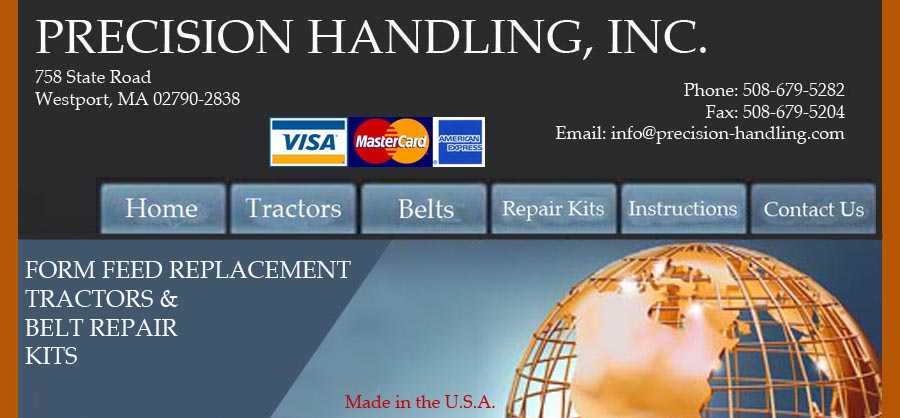General Belt-Fix Kit Instructions for 12 or 15 pin belts.
- Use these instructions if your belt has intermediate rollers.
(These would appear between the drive pins and have a flat portion on
top where they are molded onto the belt.)
- When belts have intermediate rollers, it is necessary to align the drive pins on both tractors alike. (It is possible to assemble the Belt-Fix Kit onto the tractors and not
have the corresponding pins aligned. However, in this case, the holes in
the form would not line-up with the tractor pins and loading would be
difficult or impossible.)
- Follow the basic Belt-Fix Kit instructions, bearing in
mind that the belt must be fitted into the drive sprocket identically
matching the tractor adjacent to it. (Align a pin directly over the
drive sprocket of the other tractor and repeat the alignment on the belt
being replaced prior to bonding the belt together.)
Repair or Replace?
Tractors with metal needle bearings will rarely need to be
replaced. However, tractors with plastic bearings should be inspected
for replacement. Clearances of more than 0.010" (twice the thickness of
the belt,) will greatly reduce the life of the new belt, as well as
affect the registration quality of the drive system, and consequently,
the quality of your print jobs. Replacing the entire assembly is
advised.
1. Remove broken belt and clean debris from the tractor with a stiff bristle brush.
2. Feed the belt around its track on the tractor. Start at top with hole end of belt. |
 |
3. Apply a small dot of glue on the pin end of belt. See instructions.
4. Press belt over pin through hole in belt. Hold in place for 10 seconds.
Caution: Read manufacturer's warning before using Loctite
495 adhesive. Avoid any contact with hands. Use a pencil or other device
to press belt ends together during bonding. |

|
| |
|
| 5. If a belt tensioner is used on the assembly, loosen the tensioner screw 1 turn and then retighten. |
 |
|

